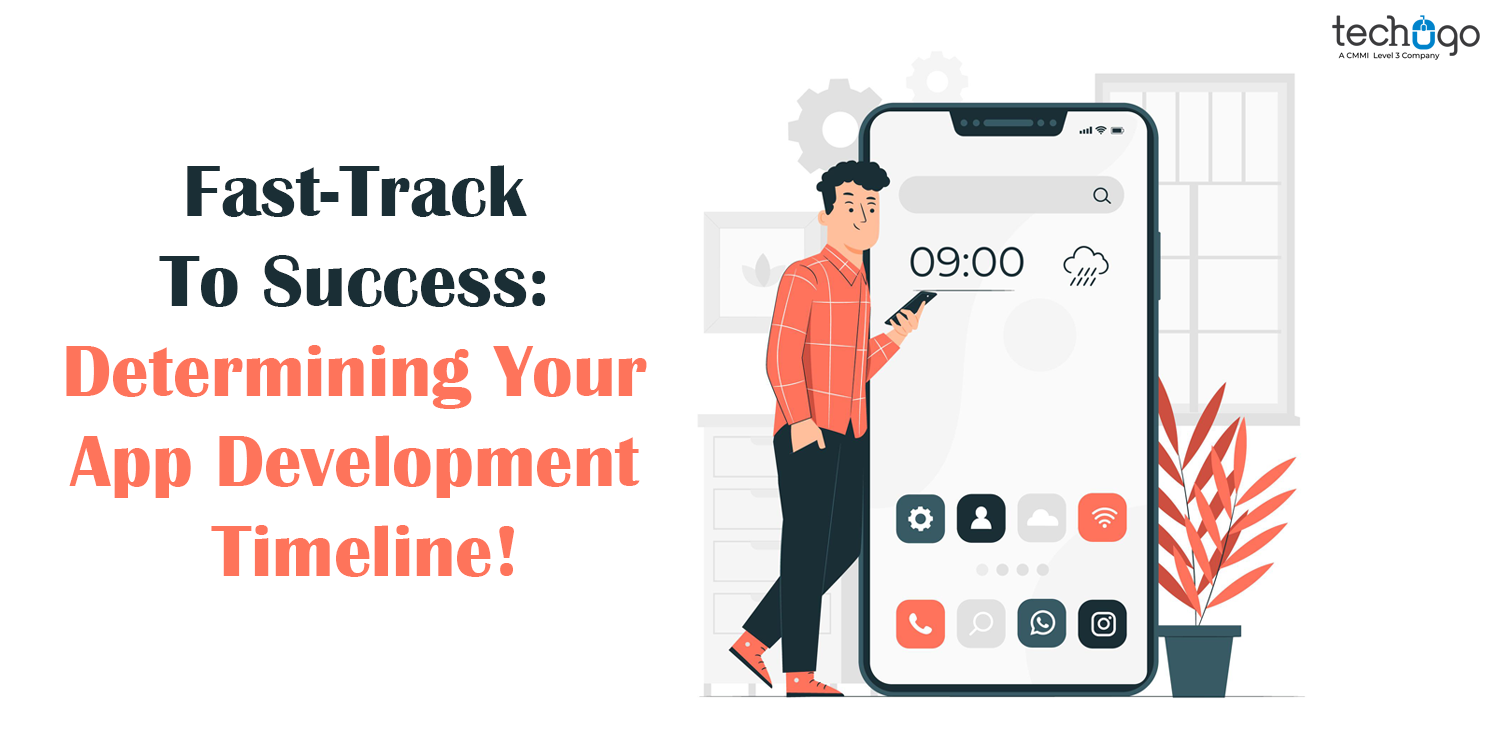134 total views
Do you have a great mobile app idea brewing in your mind? Then, why not dive deep into the app development process?
Undoubtedly, it will take a few weeks or months before you are all set to launch your mobile app to the market.
No wonder mobile apps have become a one-stop solution for all our needs; however, developing one could be complex. Do you need to figure out the time and money to be invested in your project? Fortunately, this blog will talk about the same, and we’ll help you estimate the time taken by an app development company before you can finally reap benefits from your digital solution.
Let’s get started!
Time Estimation As Per App Development Stages
An app development company can provide an accurate idea of the time to invest in every app development stage. However, we came up with a table that’ll help you understand better:
| Sr. No. | Development Stage | Small App | Medium App | Large App |
| 1. | Requirement Gathering | 2-3 weeks | 4-6 weeks | 6-8 weeks |
| 2. | UI/UX Design | 3-4 weeks | 6-8 weeks | 8-12 weeks |
| 3. | App Development Stage | 5-6 weeks | 12-14 weeks | 20-26 weeks |
| 4. | Testing and Launch | 1 week | 2 weeks | 3-4 weeks |
| 5. | Total Development Time | 11-13 weeks | 24-30 weeks | 37-50 weeks |
It is vital to identify the size of your app to understand the app development time. Furthermore, each stage must be carefully curated to deliver the best end results even if there’s a little extension in the project time.
Factors That May Slow Down the App Development Procedure
Below are a few factors that may contribute to slowing the app development process down. Take a look:
1. Paying Little Attention To the Design
Adherence to the app development process can significantly impede progress. It’s crucial to initiate comprehensive requirements and design phases, iterating to pinpoint the most optimal features and functions. Unfortunately, some individuals underestimate the significance of the design phase, opting for low-fidelity requirements and designs and immediately launching into development. In such cases, encountering incorrect architecture or feature-related issues during development can be disruptive. Attempting to alter the design or features mid-development can result in even more substantial slowdowns.
2. Absence of Immediate Feedback
Testing must be followed right after the design is curated to identify any loopholes or alterations in the app. The longer time to provide feedback may slow the process and lead to higher expenses. Thus, real-time feedback is significant.
3. Hiring a Less Experienced Team
This stands out as a pivotal factor contributing to process delays. Ensuring you have a seasoned team onboard is paramount for expediting the project. In cases where unforeseen challenges or steep learning curves arise, inexperienced teams may struggle, leading to prolonged resolution times. As a result, for all project types, but particularly in the realm of mobile application development, experience proves invaluable, facilitating smoother, higher-quality, faster, and more cost-effective outcomes.
Factors That Influence the Cost of Mobile App Development
Moving ahead with another crucial discussion, there are a number of factors that highly influence the cost to build a mobile app. What are these factors? Take a look:
1. Application Type
The type of app that must be built is one of the crucial factors that influence the app cost. For instance, the cost will vary if an entrepreneur plans to build a native or a cross-platform mobile app.
2. App Complexity and Features
The complexity of your mobile app is one of the most significant factors impacting development costs. Simple apps with basic features will naturally cost less to develop compared to complex, feature-rich applications. Consider the functionalities you want to include, such as user authentication, real-time updates, location-based services, and integration with external APIs.
3. UI/UX Design
Investing in a well-designed user interface and user experience is essential for the success of your app. High-quality UI/UX design ensures user satisfaction and engagement. However, professional design services come at a cost. The complexity of your app’s design, including custom graphics, animations, and responsive layouts, will impact the overall budget.
4. Development Team
The experience and expertise of your development team also affect costs. Hiring experienced developers may require a higher budget but can result in a more efficient development process and a better-quality app. You can choose from various options, including in-house development, outsourcing, or hiring freelancers, each with its own cost implications.
5. App Maintenance and Updates
App development is not a one-time expense. You must budget for ongoing maintenance and updates. As new mobile OS versions are released and user needs evolve, you’ll need to invest in app updates to ensure compatibility and functionality. Failure to do so can lead to user dissatisfaction and decreased app usage.
6. Testing and QA
Thorough testing is essential to ensure your app functions correctly and is free of bugs and issues. Testing includes functional testing, performance testing, security testing, and user acceptance testing.
To Sum Up!
Now that you’ve determined the app timeline and the factors that influence the cost to develop a mobile app in India, it’s time to work on your idea to begin generating higher revenue.
What do you think? If we are on the same page, get in touch with a top-notch mobile app development company to begin working on the project.
Happy innovation!

